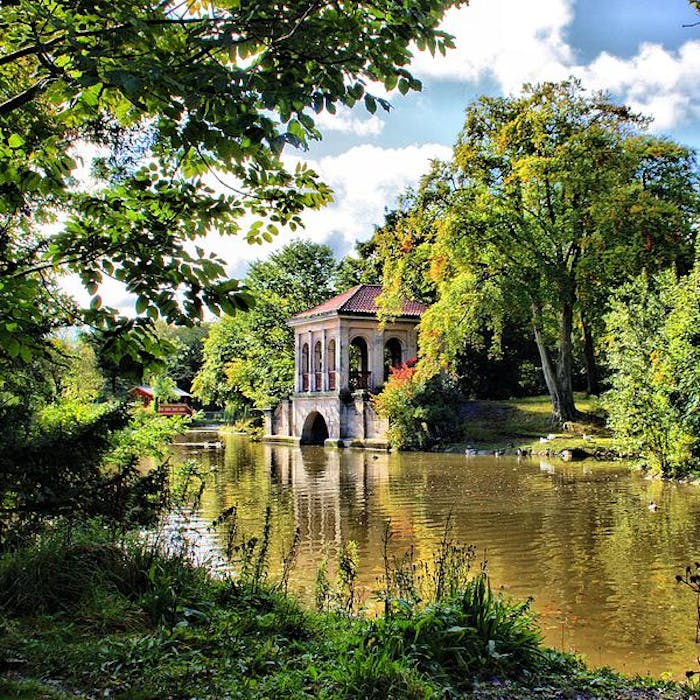
Birkenhead Park - the first municipal garden space
Birkenhead Park, in Merseyside, which opened in 1847, is generally acknowledged as being the first publicly-funded municipal park to be established in the world. American Frederick Law Olmsted was inspired by his subsequent visit to this park when he later designed Central Park in New York.
Birkenhead Park was designed by Joseph Paxton, of the Crystal Palace project fame, and opened on 5th April 1847.
Recognising the growing population and urbanisation of the area, Birkenhead's local government commissioners first proposed the idea of a civic park in 1841, using public money to buy 226 acres of marsh and grazing land on the western edge of Birkenhead. Plots of land on the edge of the proposed park were then sold off for housing development in order to finance its construction.
The park took five years to build, and an estimated 10,000 people attended for the first day of opening. The park was laid out in an informal style, with terraces, hills, rockeries and lakes. Paxton planted trees and shrubs in such a way that visitors would enjoy the surprise of coming upon unexpected views or hidden features as they wandered through the park. Building features included the Swiss Bridge, Boathouse, and a number of 'lodges': including Norman, Gothic, Castellated and Italianate designs. The Grand Entrance, one of several into the park, was built to look like a classical triumphal arch.
Prior to Birkenhead, all parks had been created by private individuals or organisations. Birkenhead's municipal facility was influential on the design of public parks both in the UK and internationally, and its opening was considered a landmark in the development of public recreational facilities. In 1850, American landscape architect Frederick Law Olmsted visited, and used his memories of the park when he won the competition to design Central Park, for the rapidly growing city of New York, which opened in 1858.
Birkenhead park had become run down and neglected at the end of the 20th century but, beginning in the late 2000s, underwent major renovation work and most of the original features have now been restored to their former Victorian glory.
Further reading
Links to external websites are not maintained by Bite Sized Britain. They are provided to give users access to additional information. Bite Sized Britain is not responsible for the content of these external websites.
